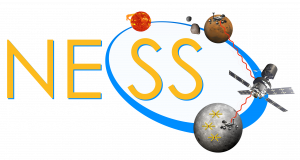How do near-infrared telescopes work?
Although they measure near-infrared light, rather than the optical light our eyes see, these telescopes operate in an analogous way to digital cameras. First, the telescope collects lots of light from a source (cameras use lenses; these telescopes are so large they use mirrors). Then, it is focused on a detector, which is a much, much more sophisticated analog of the sensor on a digital camera.
Image: All-Sky Infrared Survey by Infrared Astronomical Satellite IRAS.
Credit: JPL /NASA/JPL-Caltech/IRAS/2MASS/COBE
Why space?
Near-infrared observations are possible from the ground, but space is an ideal environment for them. Telescopes on the ground must contend with three complications. First, the atmosphere (especially water vapor) absorbs a great deal of infrared light. Second, the atmosphere also distorts the light as it passes through, blurring the images. Third, the Earth itself glows in the near-infrared. The Hubble Space Telescope follows an orbit that keeps it quite close to the Earth, which helps overcome the first two problems but not the last. The James Webb Space Telescope, which will observe entirely in the infrared, will instead be launched several million miles away from Earth, escaping its glow entirely.
Image: Hubble Space Telescope in Earth Orbit.
Credit: JSC
What has Hubble done already?
One of the Hubble Space Telescope’s grand achievements has been to observe a few patches of the sky with exquisite detail. Hubble made the most detailed such study, the Ultra-Deep Field, by pointing at a single patch of sky for several weeks of observation time! This field has provided the “deepest” picture of our Universe yet seen, unveiling some of the most distant galaxies yet observed. These galaxies are much smaller than our own, but they are still forming stars much more rapidly. Some have unusual properties as well - but there is no evidence yet that the stars in these sources are substantially different from later generations. Astronomers eagerly away future observations of even fainter and more distant objects that may reveal such signatures.
Image: Hubble's most famous image: towers of dust and gas in the Eagle Nebula (M16), named 'Pillars of Creation'.
Credit: NASA, ESA and the Hubble Heritage Team (STScI/AURA)
What does the future hold?
The James Webb Space Telescope is scheduled to launch in the fall of 2021 and will begin science operations in full the following year. Astronomers have already designed several campaigns to search for more distant and fainter galaxies during the Cosmic Dawn: James Webb will push the frontier back to just a few hundred million years after the Big Bang (when the Universe was less than 3% of its present age!), and it may discover a few sources from even earlier times. In addition, James Webb is many times larger than Hubble, which will allow it to study the detailed properties of these galaxies.
Image: James Webb Space Telescope concept
Credit: Northrop Grumman
Toward the end of the decade, the Nancy Grace Roman Telescope will complement James Webb’s observations. While, like Hubble, the James Webb Space Telescope can only study a tiny patch of the sky at a time, the Roman Telescope is designed to survey large areas at once. While smaller than the James Webb – and so less able to find faint sources – the Roman Telescope will be essential for finding rare, bright galaxies (and other sources) that lead the way in building structures in the Universe.
Image: Nancy Grace Roman Telescope concept
Credit: GSFC/SVS


